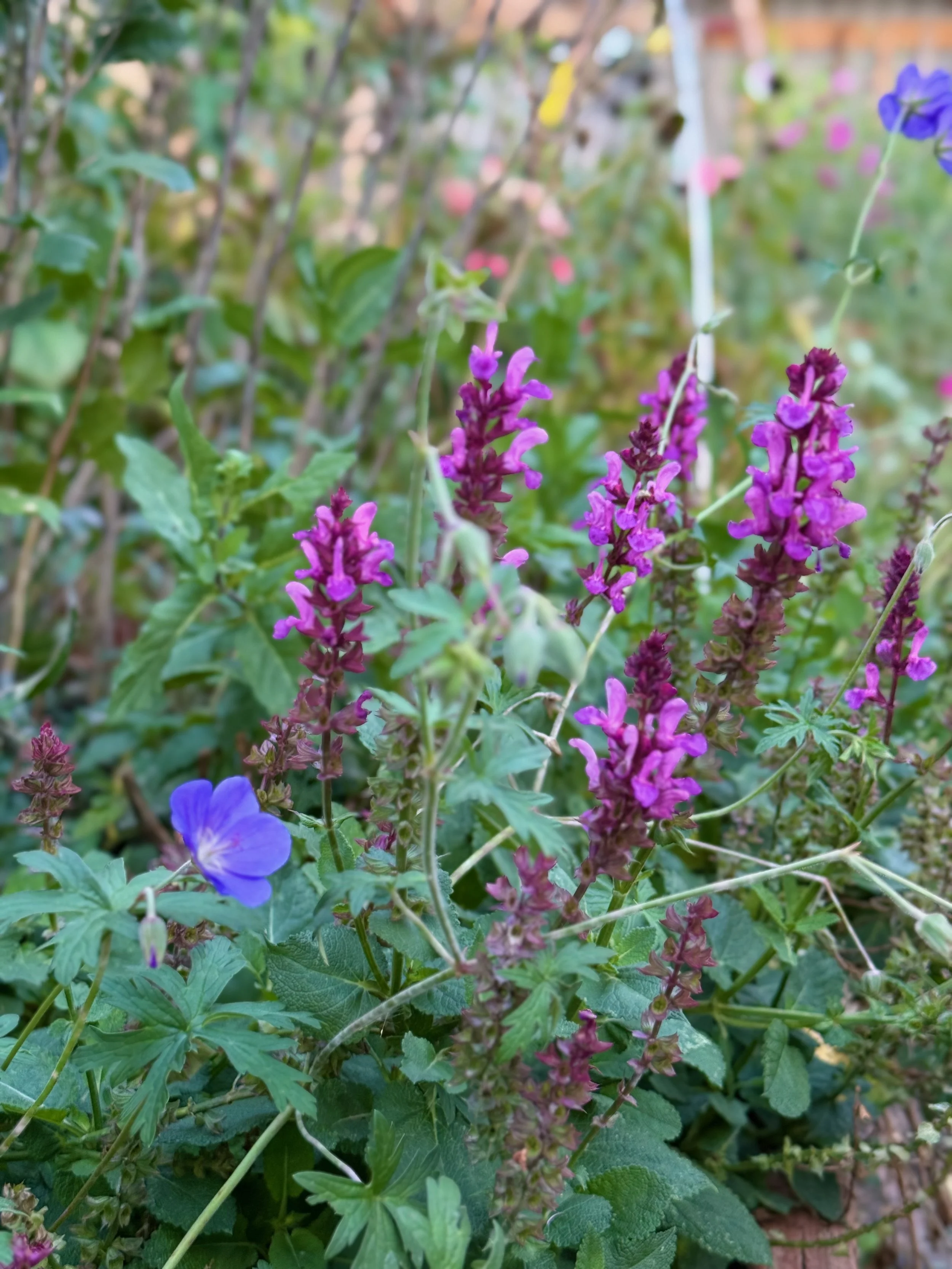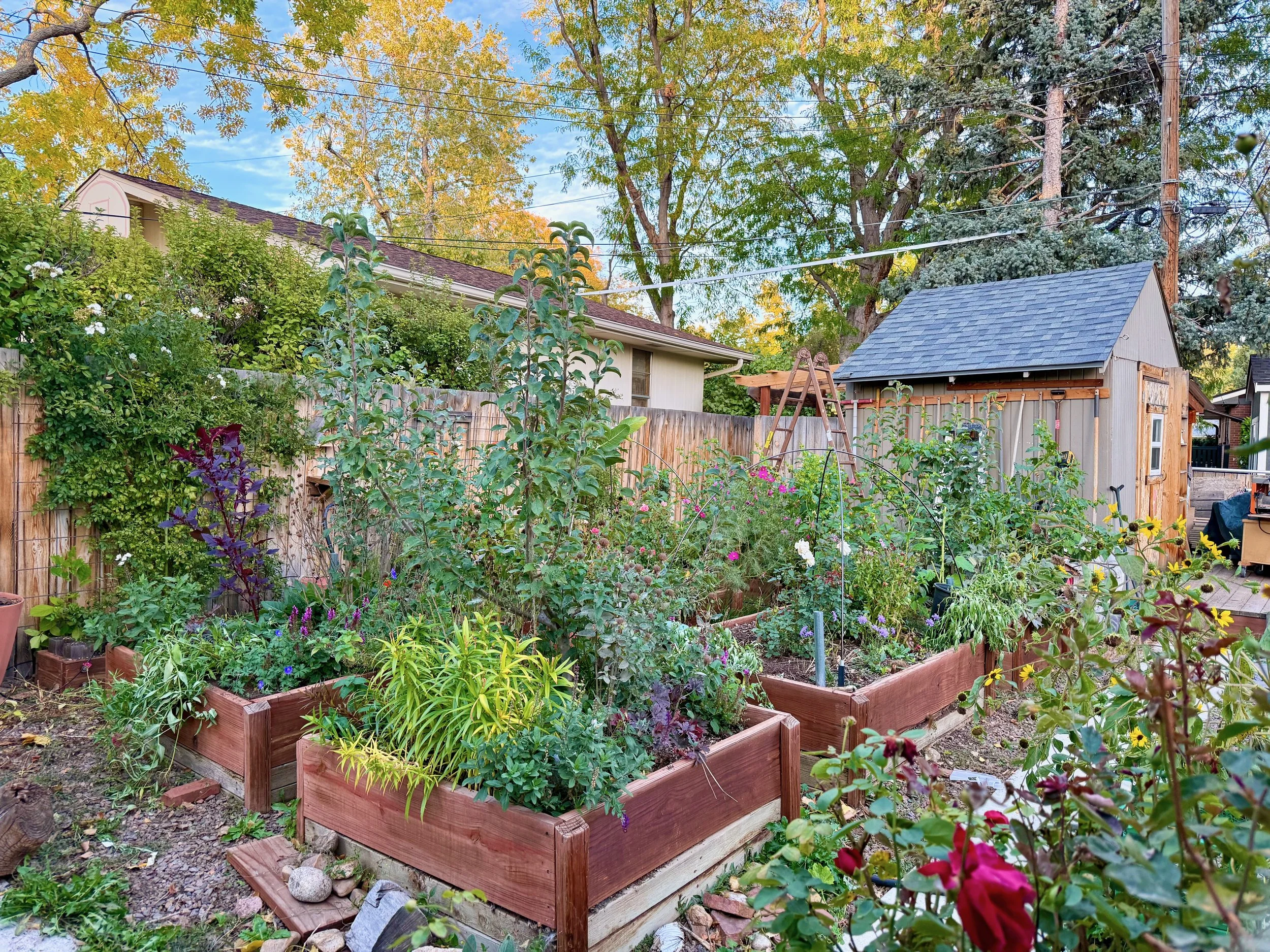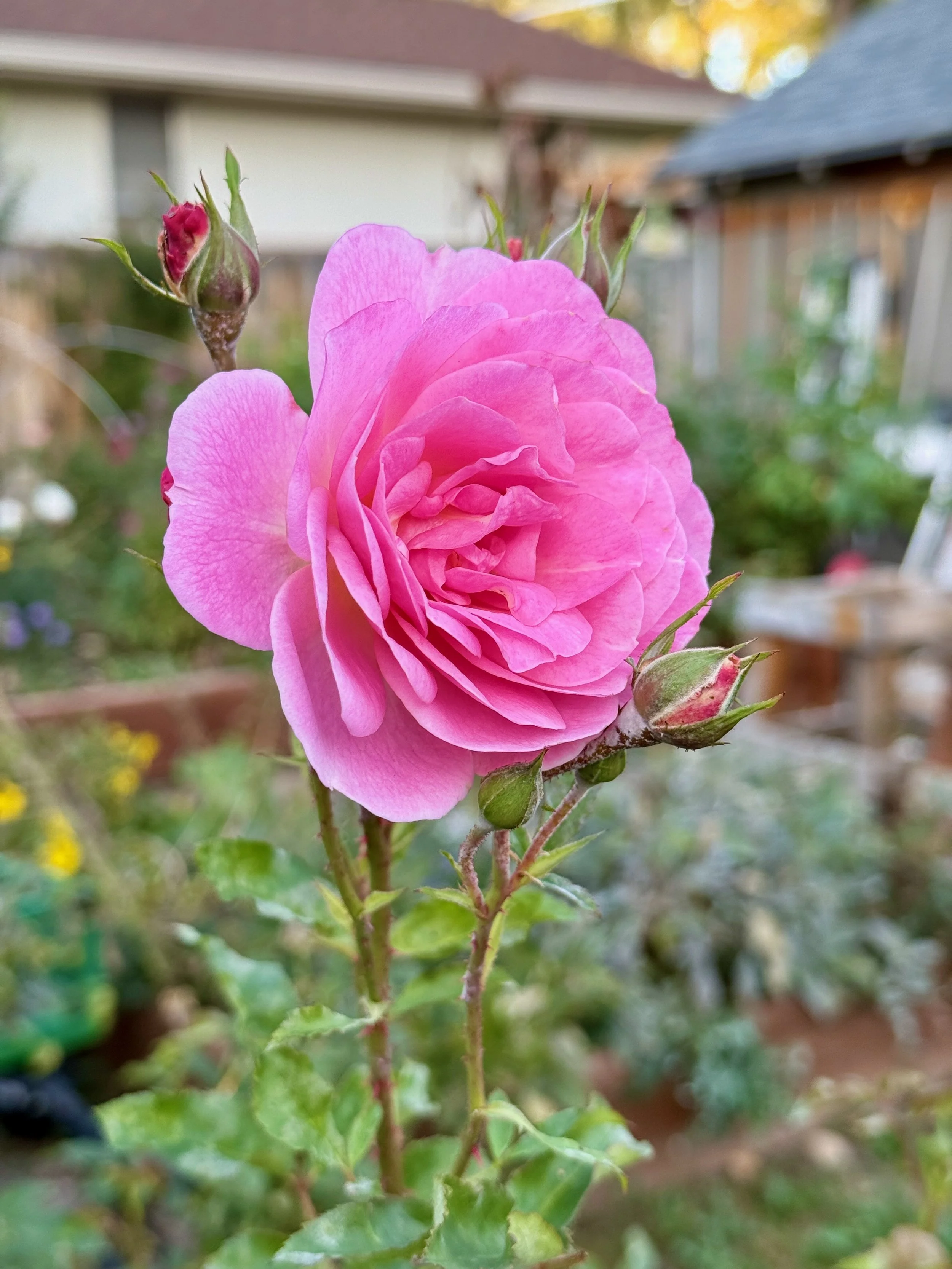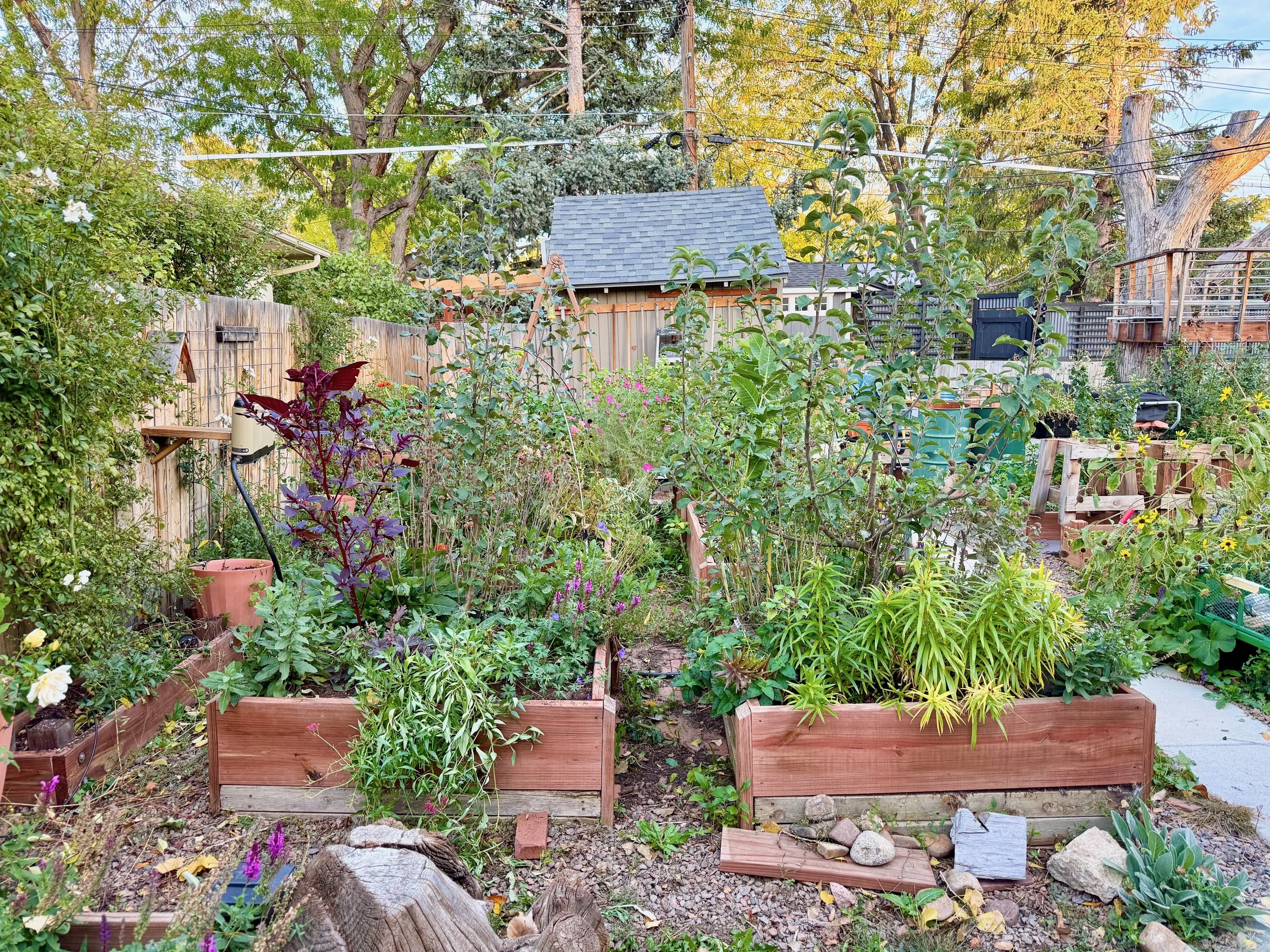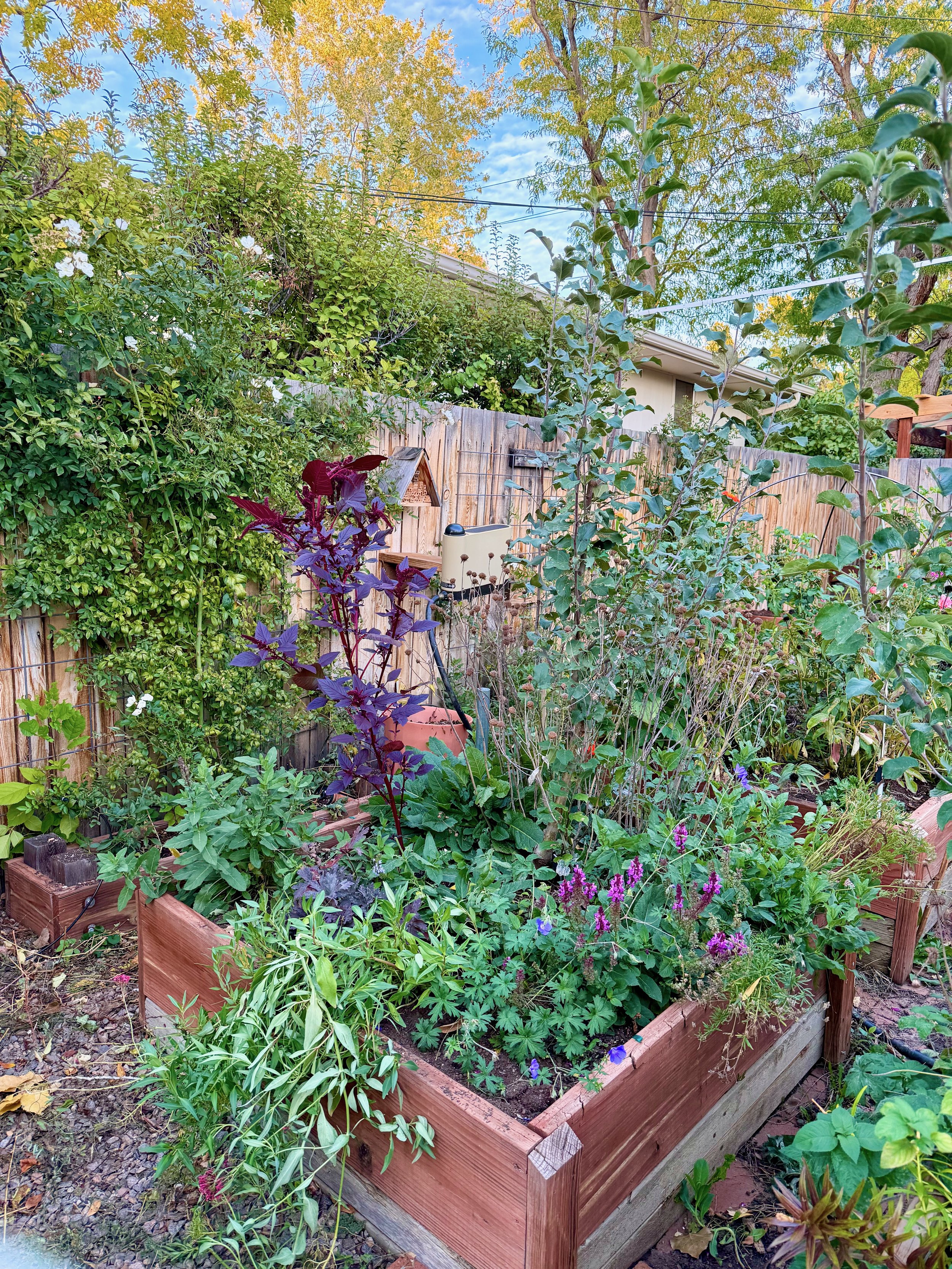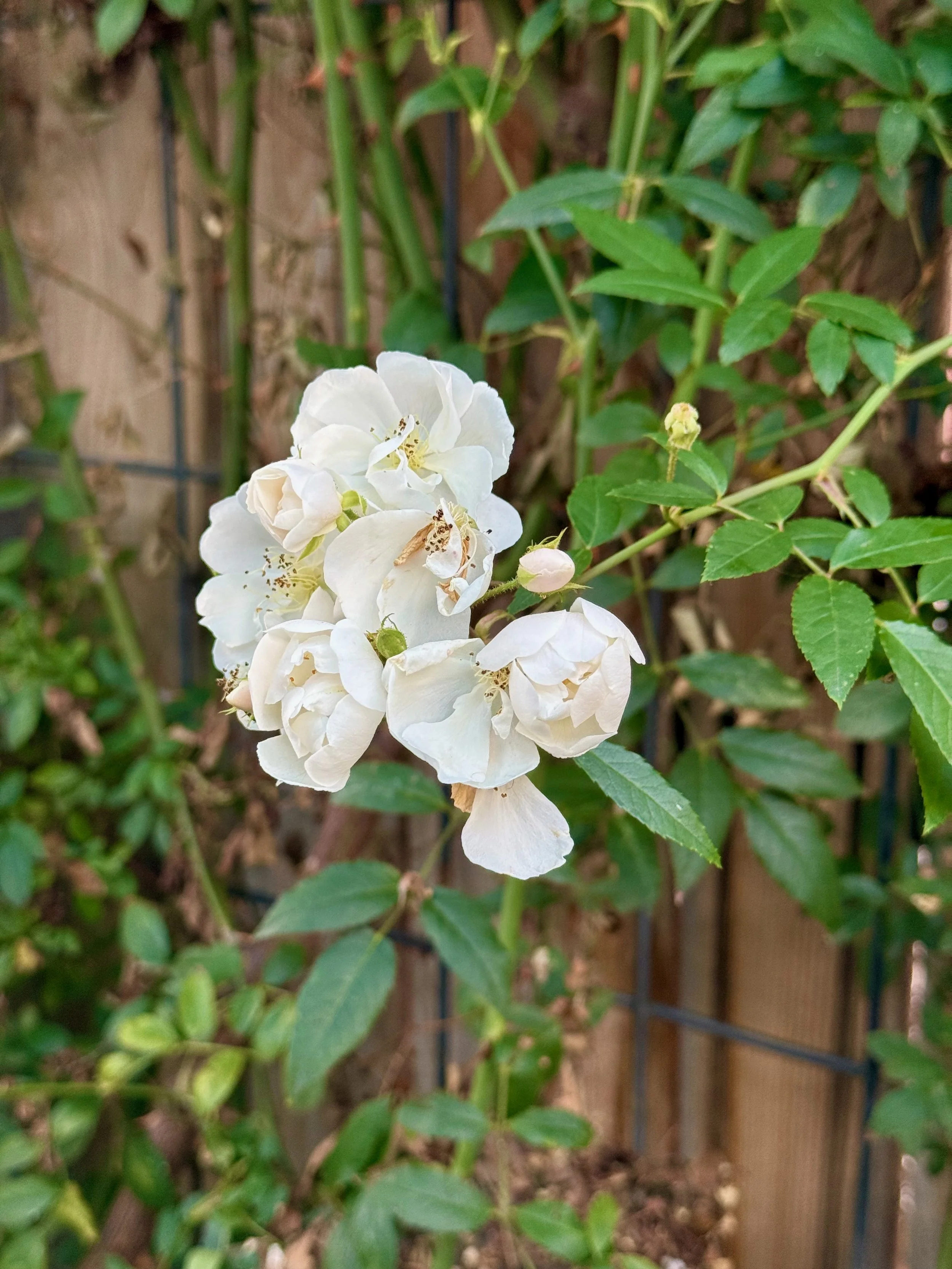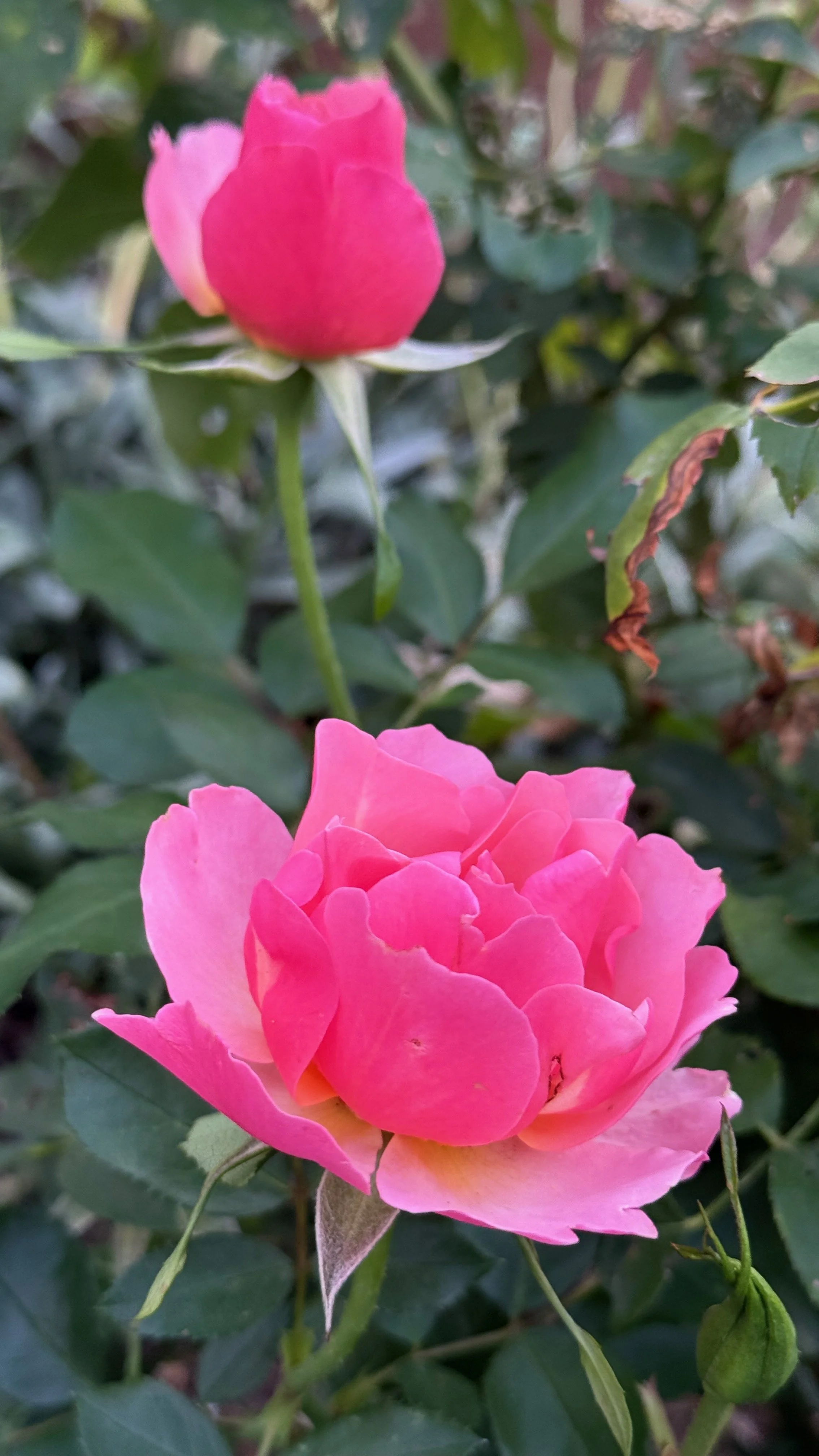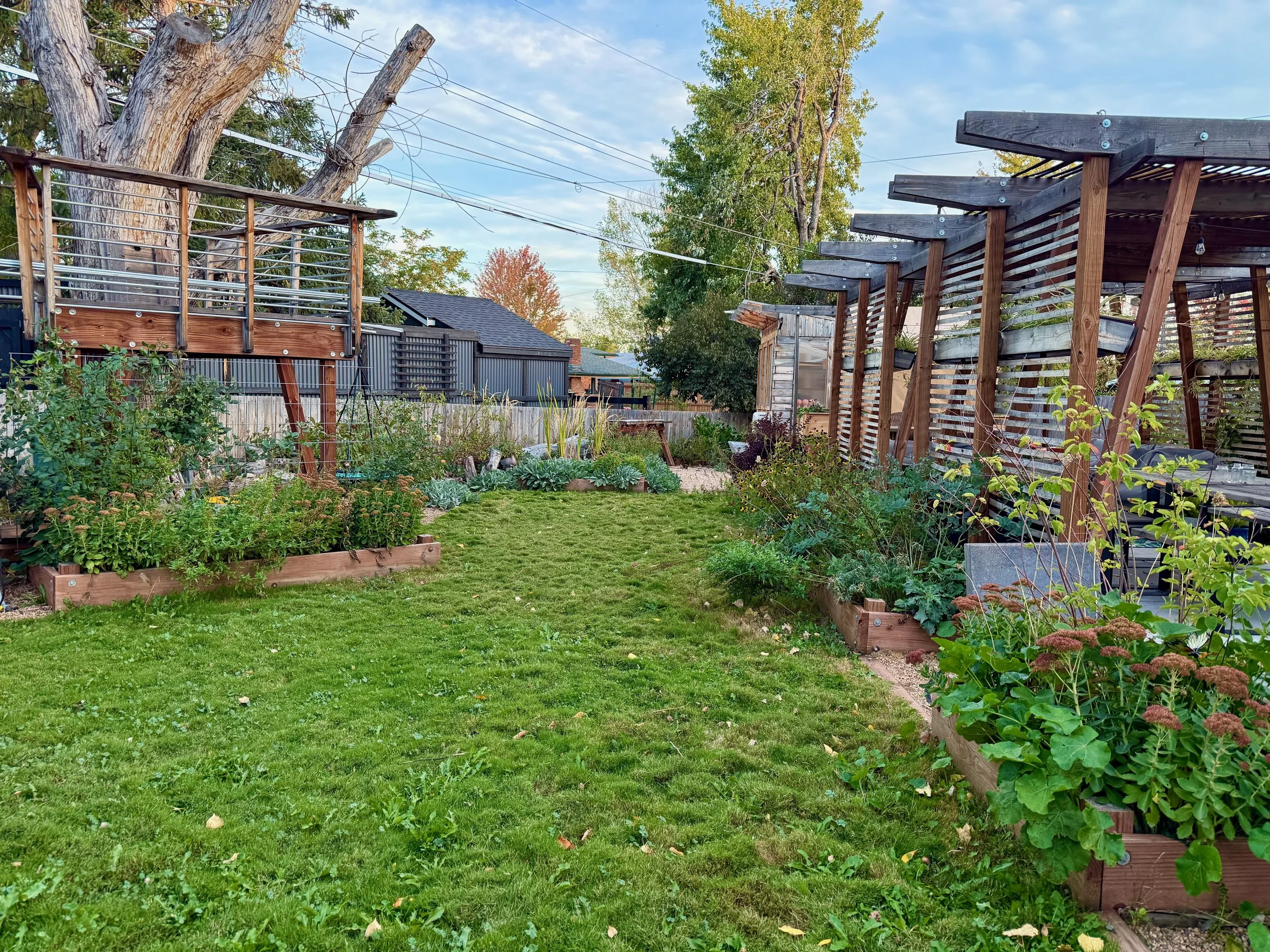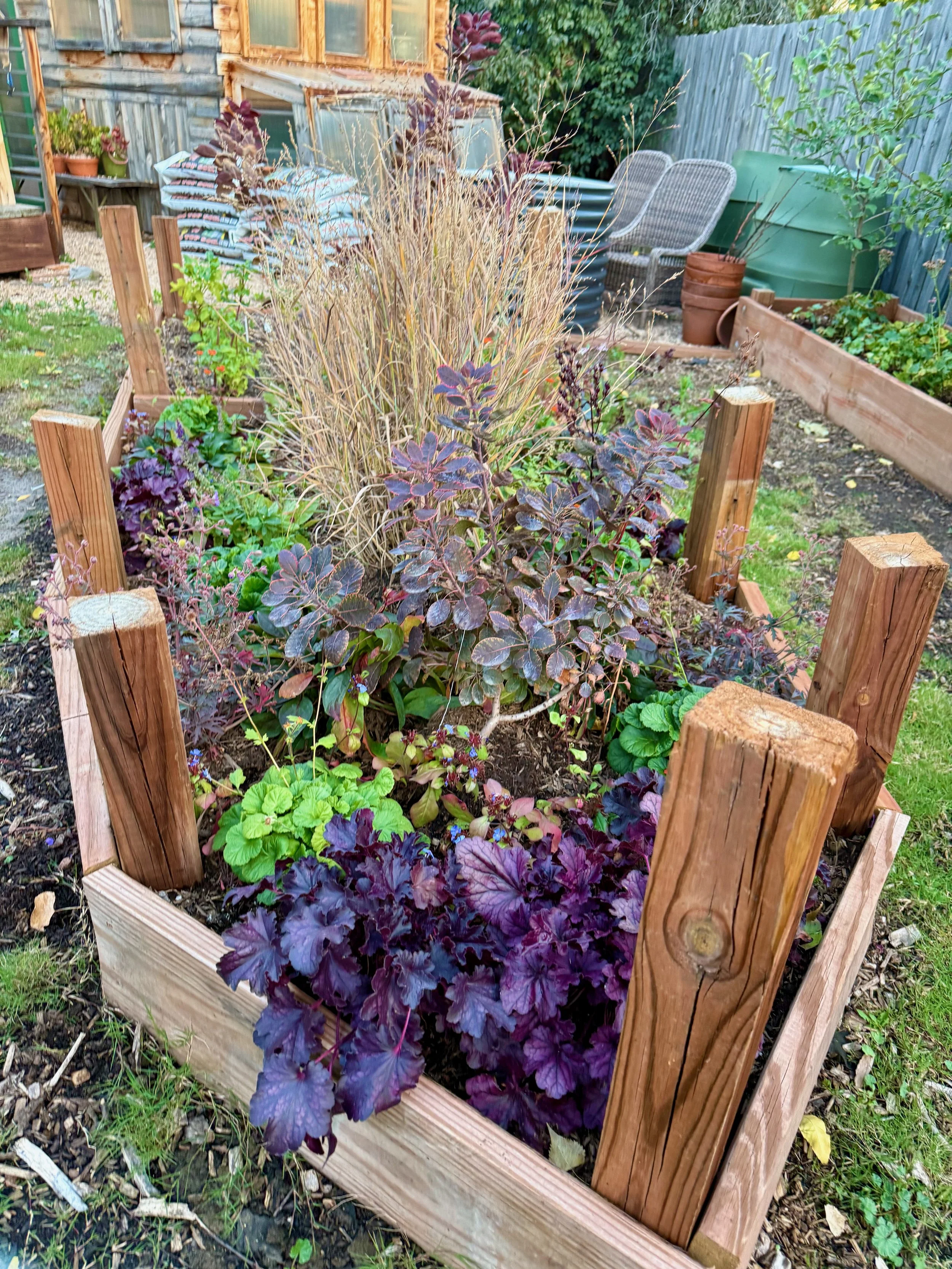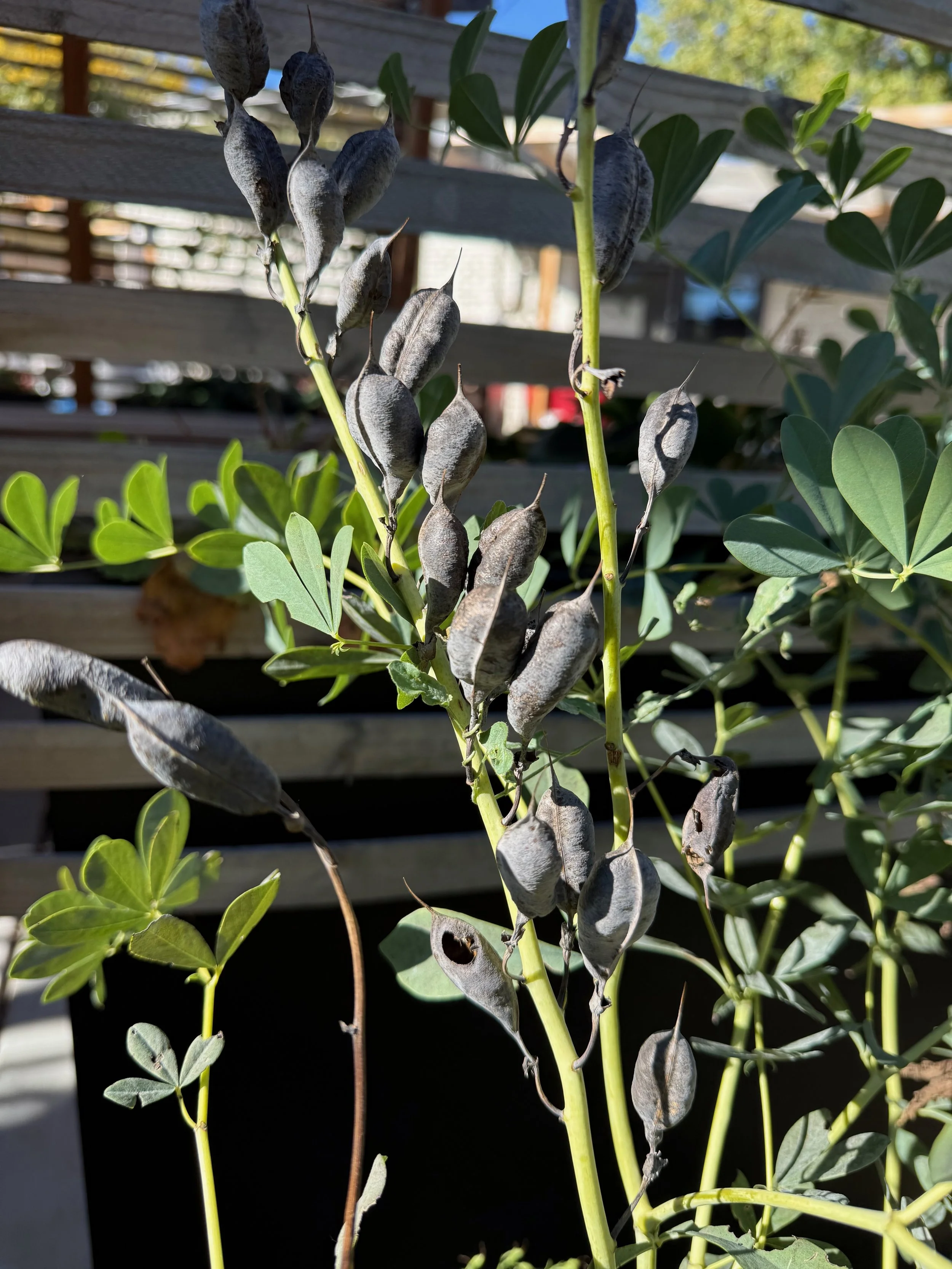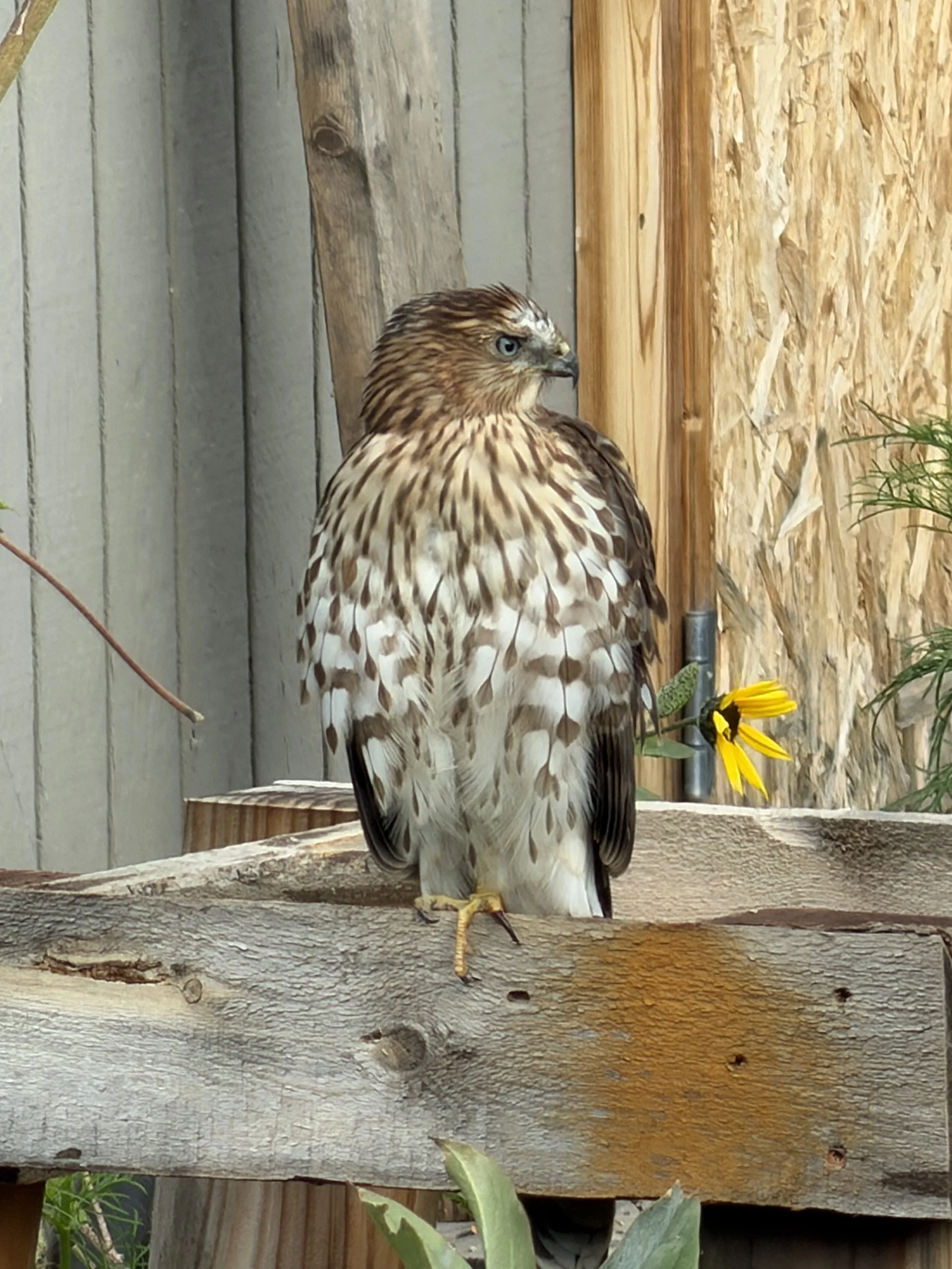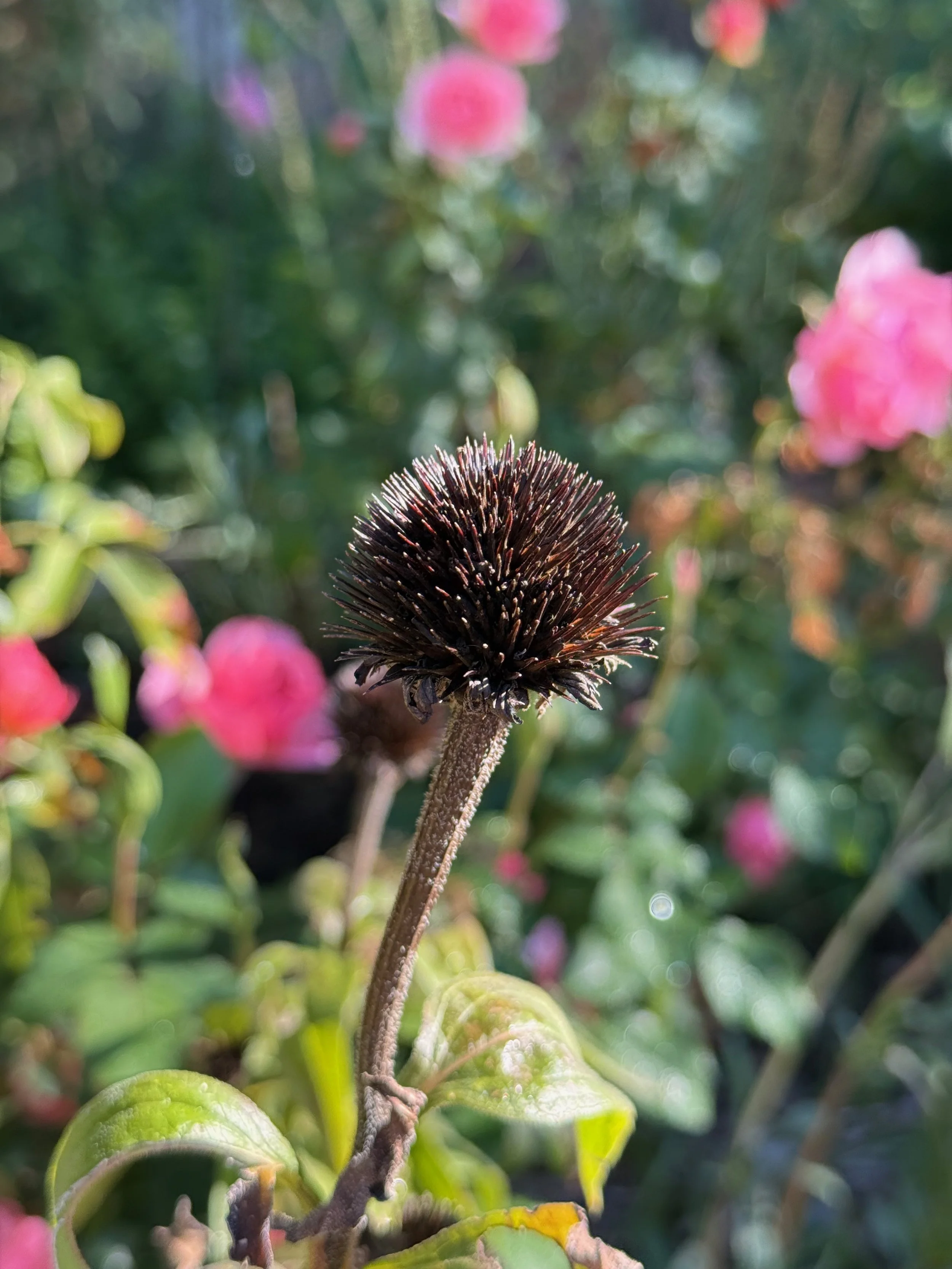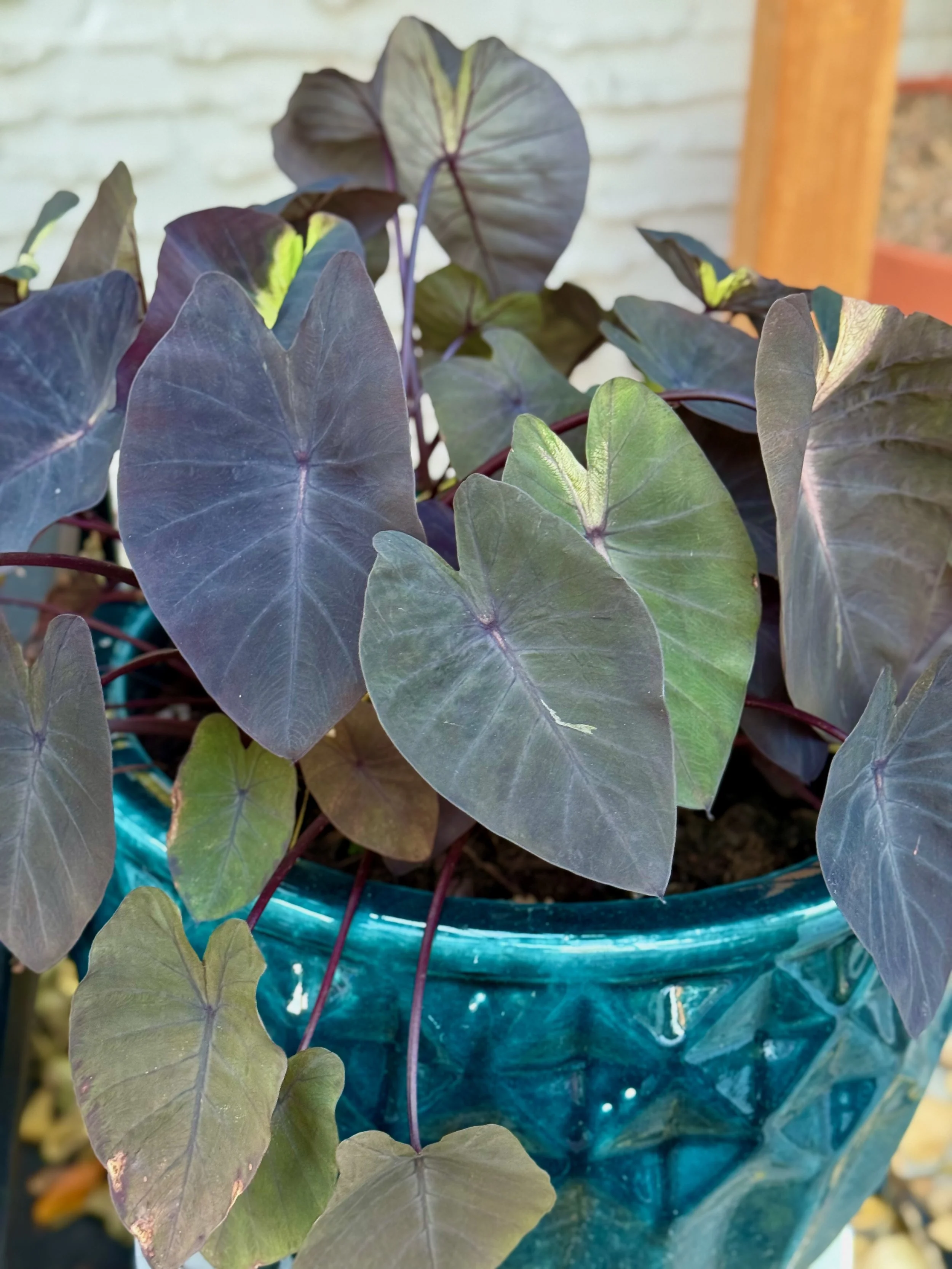Fall Garden Tour
As I have written before, autumn is my favorite season. And October is particularly glorious in my little corner of the world. The leaves are changing and are beginning to fall. We haven’t had our first frost yet, but I’m certain it is coming. We are well past our average first frost date (wondering about yours, check this out). And the forecast shows the possibility of frost and snow early next week. So I figured now was a good time to do a little garden tour.
The light was just right in the back garden, so that’s what we will explore today. In American parlance, this is our back yard. But as I have written before, I prefer the more European reference “garden,” because it is an active word. It’s both a place and an action — and that’s very much how I think of my back garden.
Since I haven’t done this here, let’s start with some before photos. We bought this house eight years ago in part because it had such a big, spacious yard. Our lot is actually slightly smaller than average for a suburban lot in the U.S., but having traveled, I know it is palatial compared to much of the world!
We purchased this house when it was buried in snow, and what we didn’t know was that it had almost no grass at all — just noxious weeds including Bindweed, Canada Thistle, and Knotweed. So much of my gardening work over the years has been an effort to eradicate weeds and replace them with plants that support biodiversity and wildlife. It’s been a journey!
Over the years we have put in infrastructure like the Greenhouse, the Shade House, and last summer the new deck. But I have also planted at this point thousands of plants. Let's focus on plants, today.
The Greenhouse
New here? Check out these Garden Infrastructure Projects!
The Shade House
DIY Deck Build
The Cutting Garden
This is what started out as our first vegetable garden, but it is now transitioning to a perennial cutting garden. I am probably mid-way through that transition, and it will take a few more years and a lot more plants to get it to look like what I see in my head.
I started with bulbs and have filled these beds with daffodils, alliums, and tulips. And then I planted a foundation of peonies, roses, and apple trees along with several varieties of salvia, hardy geranium, and Monarda. I want to be able to cut flowers here from April through October. Many of these plants are young and quite small, but eventually they will be robust and floriferous. At least that's the plan!
Either this winter or next spring I hope to redo the paths in this part of the garden. Where there isn't concrete, the paths are a mismatch of rough gravel and badly-laid bricks. I need to rip all of that out and replace it with pea gravel like we have in other parts of the garden. But that's a project for cool weather when there aren't as many plants about to avoid. I also want to rebuild the raised beds while we are at it – probably something to do when the soil is frozen. Some of the oldest lumber is rotting away and needs to be replaced.
The Grand Garden
We named this the Grand Garden not because it was grand, but because we hope it will be one day. In fact, it was anything BUT grand. However, with the investment in lots of beds, the Shade House, and the pond at the far end, the Grand Garden is on its way.
Last summer we planted out Dog Tuff grass here which is a miracle plant in this climate. It is drought tolerant – as in I only watered it THREE times this summer. It handles foot traffic and dogs beautifully. And when I get the weeds fully managed, it will be a lovely lush lawn with a slight hobbity-look to it. And the grass is soooo soft!
This garden will also get some work next spring. The shade of the Shade House is too deep for some of the plants in those beds, so they will get transplanted to sunnier spaces. And I'll fill in with more part-shade lovers.
The Pond Garden at the far end is filled with drought-tolerant plants around a small pond. We have had ducks and all kinds of birds and insects take hold there. It's even more of a wildlife magnet than I expected.
The South Lawn
On the other side of the Shade House, we have named this the South Lawn. We planted more Dog Tuff grass here this summer, and it is growing in so nicely. By next summer it will be thick and lush here, too.
This is the site of our former Pirate Ship play structure, the Lucifrix – the first thing my husband built in this yard. This past spring we decommissioned the Lucifrix, but to memorialize that ship upon which many hours of play were spent, we turned the shape into a raised garden bed. The back end is filled with dahlias. And the front end is planted out in sun-loving plants in various shades of purple.
I have moved all of my dahlias to this area of the garden. I grow dahlias for cut flowers, primarily. And rather than struggling to support them in the landscape, I decided to grow them as if I am a flower farmer – in rows in dedicated beds. It's so much better and easier in my dry climate! They all need the same amount of sun and water and nutrients, and they are more prolific, too. PLUS, I can leave them in the ground over the winter. Yes, even in Zone 5|6! More on that coming soon!
By this time of year, the dahlias are beginning to sprawl and look untidy, but they are producing more flowers than I can cut – and will until we get frost. So I keep cutting them and making bouquets!
The Orchard
We have made a circuit from one side of the house to the other, moving around the garden. And now we come to my favorite part of the garden: the Orchard. This is a long skinny strip of what could be wasted space. But my office windows overlook this area, and I wanted something beautiful to gaze at when trapped inside. Plus I wanted to plant fruit trees. So a few years ago, we created the Orchard.
October in the Orchard is all about excess. Everything is overflowing and pushing out of the boundaries. It's verdant – a celebration of fecundity. I have lost a few trees to voles which I hope to replace in the spring, but everything else is flourishing.
I'll be pulling out the tomato plants this week. They are still producing, but the nights are getting cold enough that nothing will ripen anymore. It's time to thank them and send them to the compost bin. Then I'll add a thick layer of compost to the veggie garden. And I'll cover it with straw for the winter – part of putting the garden to bed.
So, that's a peek around in the back. At this time of year, nothing is very tidy or restrained. It's wild with the last throes of summer. And I quite like that. After all, many of these plants will begin their hibernation in a week or two – and some are at the end of their lives.
I also allow them all to romp about, because this garden isn't just for me. Every day we have creatures who come to feast, to bathe, to mate, to rest, and to nest in our garden. And all of those blossoms and foliage provide last-minute sustenance and shelter to wildlife large and small who are preparing to burrow or migrate or otherwise get cozy for the cold winter months that are to come. Finches and other small birds will eat off of the Coneflower, Tithonia, and Monarda seed heads all winter. The Sunflowers continue to buzz with native bees on sunny afternoons. And the flowers that have already gone to seed have been picked clean by squirrels and larger birds.
A hawk visited last week – first flirting with a nursing squirrel then resting amongst some plants and flowers, watching for mice, I assume. The mice have been busy burrowing down, and I see evidence of their eating and harvesting of seeds frequently, too. And the rabbits hop about nibbling away.
They all know that winter is upon us, and they are preparing as we are. I am mindful of that.
at the close…
So if you see messiness in my garden – or yours – remember that there are so many little creatures who depend on that messiness. They need those seedheads and fallen leaves and the last blooms and so much more to prepare for the cold and barren time to come.
Happy Gardening!
Angela
Subscribe now so you never miss a thing!


